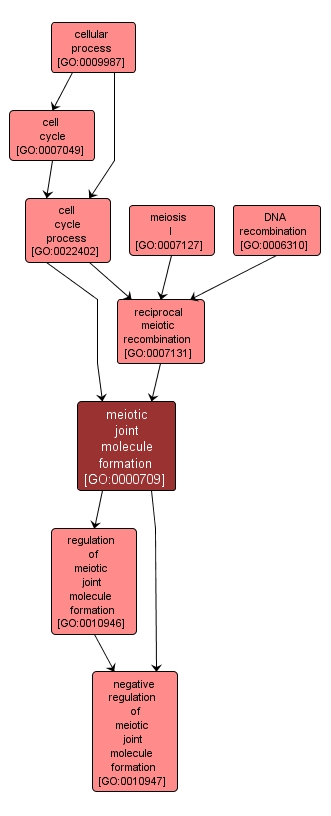| Desc: |
The conversion of the paired broken DNA and homologous duplex DNA into a four-stranded branched intermediate, known as a joint molecule, formed during meiotic recombination. These joint molecules contain Holliday junctions on either side of heteroduplex DNA. |














